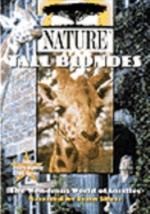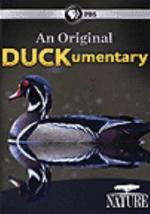- Movies & Television
- Connect Your Summer
- May We Suggest
- nature films
- animals
- wildlife
- Pets/Animals
- Animals
- Movie
June 1, 2016 | SuzyQ
Underdogs: Two dogs with behavioral problems are taken in hand by a trainer and given a second chance at success.
This personal odyssey takes a surprising and revealing look at the magnificent giraffe.
Ducks are true originals. There are more than 120 different species of ducks in all, a fantastical group of complex characters. Ducks have a talent for survival, and life stories filled with personality and charm.
The story of the world-famous Lipizzaner stallions from their origins in ancient times to the almost unknown drama of their rescue in 1945.
Twenty-five years ago, filmmaker Colin Stafford-Johnson traveled to Sulawesi in Indonesia and fell in love with the Crested black macaques (Macaca nigra). These feisty monkeys are beach bums with punk hairstyles, expressive faces, copper colored eyes, and some very unusual habits, making them some of the most charismatic of all monkeys. Learning that their numbers have dropped dramatically, he returns to find out why and to see if he can help.
A family of urban raccoons are tracked for six months by GPS, revealing that the more obstacles they face, the smarter they get.
Wildlife conservationist and bear biologist Chris Morgan travels across Alaska, examining the lives of North America's three bear species: brown bears, black bears, and polar bears.
PBS explores the snowy owl, the official bird of Quebec made popular by the Harry Potter series.
Biologist Chris Morgan attempts to locate and film Siberian tigers living in Russia's Far Eastern forests.
The ostrich, the emu, and the rhea, together with the kiwi and the cassowary, are the court jesters of the avian world, because they can't do the one thing that birds are famous for doing. They can't fly. But exactly how and why did these birds abandon flight? It's been one of the natural world's great mysteries. And now DNA is promising to give us the answer.
In 1959, the United States Air Force captured dozens of baby chimpanzees in Africa, transporting them to Alamogordo, New Mexico, where they and their offspring were to endure a grueling life as the ultimate human stand-ins. From experiments in space travel and high-velocity crash tests, to pharmaceutical testing and hepatitis and AIDS research, to roles on the silver and small screens, these original Air Force chimpanzees and others that followed gave their lives to benefit humankind. Now, a few extraordinary people are working to give those lives back.
Examines the relationship between dogs and humans, from their initial domestication to the present day, the many different breeds of dogs, and how modern technology is changing the science of dog breeding.
What actually makes owls so special? Bird trainers Lloyd and Rose Buck and their very special family of owls provide a rare opportunity to learn more about these unique birds. Using the latest technology, we can take a brand new look at owls in more detail than ever before.
Ecologists follow kangaroos as they move into Australia's capital city Canberra.
Hummingbirds are the tiniest of birds, yet they are some of the toughest creatures on the planet. Using cameras able to capture over 500 images a second, the hummingbirds' magical world can finally be seen and appreciated.
Explores odd and unlikely animals that may seem ill equiped for survival but have thrived.
Venturing across thousands of miles of open ocean, a 30-year-old loggerhead sea turtle emerges on the very beach where it was born. The loggerhead performs one of the most remarkable feats of orientation and navigation in the animal kingdom.
Pieces together the final days of Broken Tail, a tiger cub in one of India's best-protected tiger reserves, who without warning abandoned his sanctuary and was killed by a train 200 miles away.
Takes a look at the world's most iconic snow animals across the globe..
Traces the evolution of cats from their beginnings on the Asian continent to their introduction into the Americas, taking an in-depth look at what makes the family of felines unique and the evolutionary tricks and adaptions that truly make a cat, a cat.
Scientists and snake hunters study the problem of Burmese pythons who have been introduced to Florida's Everglades National Park despite not being a native species.























